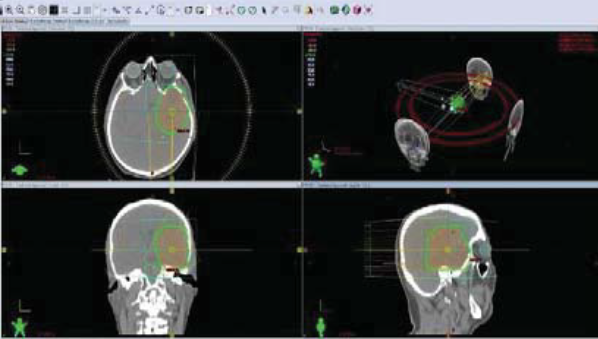Radioterapija postoperativnih glioblastoma i verifikacija tretmana savremenim radioterapijskim tehnikama
Keywords:
Radiotherapy, Glioblastoma, Modern radiotherapy tehniquesAbstract
Purpose: To present the importance and severity of the issue in patients with glioblastoma through median and over all survival. To highlight new achievements in modern radiotherapy as one of the modes of treatment for glioblastoma, and advanced techniques of delivery and treatment verification.
Methods: As a material and methods for the preparation of this review article, articles were used choosing systematically on internet science databases.
Results: Glioblastoma multiforme (GBM) is the most common malignant tumor of the brain, which is ultimately a fatal disease, with median survival of 16.6 months and 2 years of survival of 26,5%, and total five-year survival is about 4%. The clear benefits of survival have been demonstrated by the use of postoperative radiotherapy (RT) prescribed at dose of 50 to 60 Gy. Attempts to escalate doses over 60 Gy lead to increased toxicity, without additional survival benefits.
The current standard treatment involves the simultaneous application of chemotherapy and radiotherapy to 60Gy / 2Gy daily for 30 days, IMRT or VMAT techniques, followed by adjuvant treatment of temozolomide for 6 months.
Hypofractioned RT is associated with a small effect on total survival, it can be applied to recurrent glioblastoma. Stereotactic radiosurgery is an effective therapy for relapsed GBM, but is usually associated with a significant toxicity, and is applied after assessment of the patient's general condition and performances.
Conclusion: Although glioblastoma is ultimately a fatal disease, the studies have shown respectable results in postoperative treatment with a combination of chemotherapy and radiotherapy, using modern techniques to deliver and treatment verification.

Downloads
Published
How to Cite
Issue
Section
License
Copyright & licensing:
This journal provides immediate open access to its content under the Creative Commons CC BY 4.0 license. Authors who publish with this journal retain all copyrights and agree to the terms of the above-mentioned CC license.



